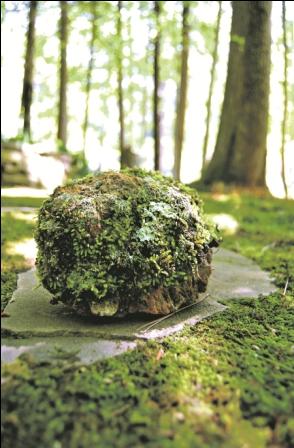Add mysterious beauty with lichen
Lichens are a type of colourful fungi that grow on rocks, trees, walls and paving stones. They are not parasitical, but instead feed on air, dust and ambient moisture. The appearance of lichens gives gardens an aged, mysterious beauty so some gardeners try to encourage lichen growth. It can take lichens several years to develop, but with right environment you can create a mini-ecosystem that supports good lichen growth.
Combo organism: When you see a lichen in your flower bed, you are not looking at a single organism, but two organisms in a symbiotic relationship. Lichen is a combination of algae and filament fungus. It resembles a ruffled, blue-green slab-like structure. Although it is not harmful, lichen may be considered unsightly by some gardeners. But getting rid of lichen in the flower bed is simple.
Why remove it? They grow abundantly on twigs and trunks of many trees and shrubs. Lichens have chlorophyll and manufacture their own food, so they are not parasitic on the host plant. They could as easily grow on a rock and do no harm to your fruit tree.
But when lichens are thick, gardeners often fear they are suffocating the plant. This doesn’t happen, but lichens may interfere a bit with bud development. A healthy, vigorous plant easily overcomes the lichen. Proper fertilisation, watering and cultural management of the fruit trees will assure their health despite the presence of lichens.
Benefits and uses
• Ground lichen take nitrogen from air and put it in the soil so plants can use it.
• Many lichen are used medicinal — it is estimated that 50 per cent of all lichen have antibiotic properties.
• Some lichens are used as a nesting material for birds.
• Historically, lichens have been used for silk and wool dyes. — Compiled






